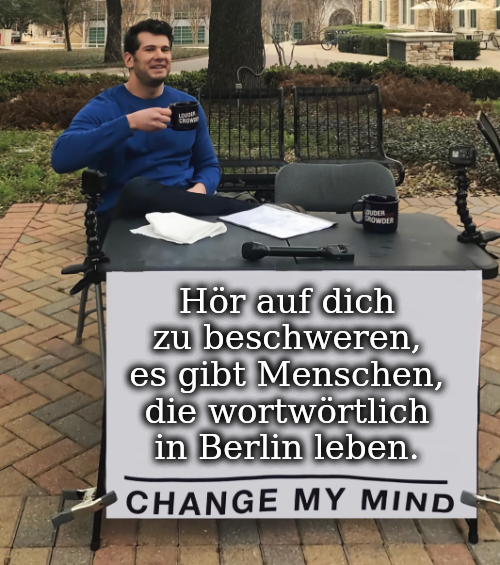Three days ago I posted a brief tour of the city center of Kolozsvár (Cluj Napoca) and today I'm back to show you the wonderful church of St. Michael's. Being one of the tallest building of the area, it is also a reference point as you can't miss it.
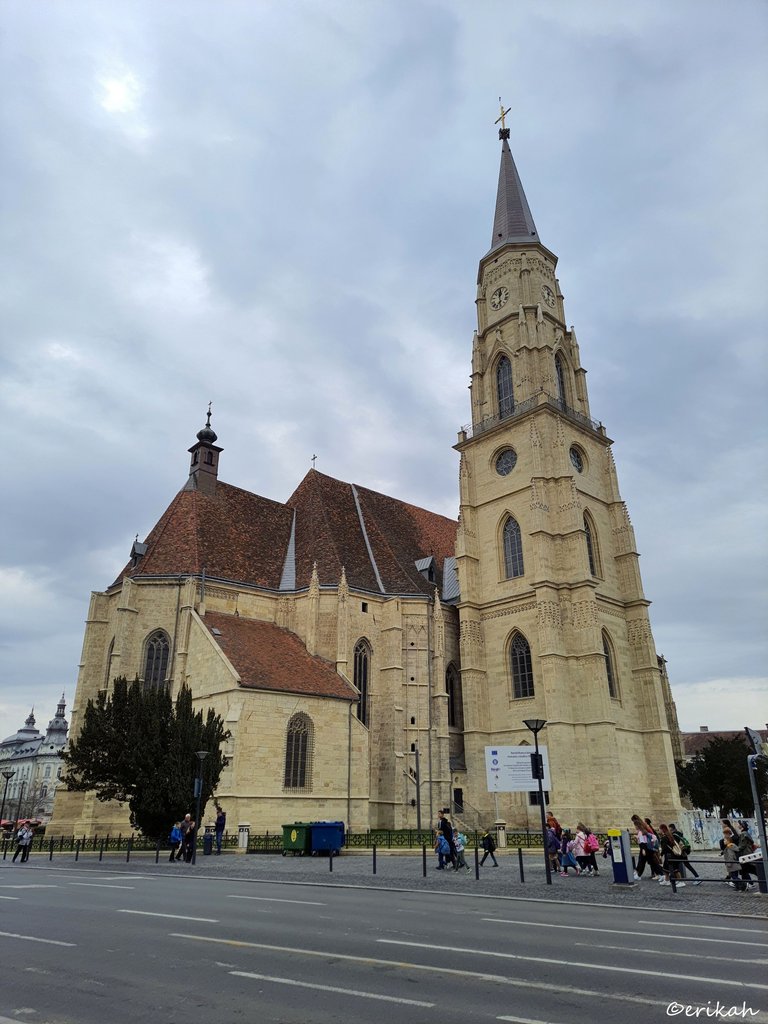
Taking a half decent photo of such a tall building in such a busy area is (I should say art, but I'd rather say) a real challenge. If you're new to photography, you may need to learn the hard way. If you're not new, you know you have to take at least 5 shots, to get one right as cars are coming and going, you always capture one or two, that can ruin your photo. People are not any different, in such a busy city, there's a 99.99% that a few people will end up in your photo.
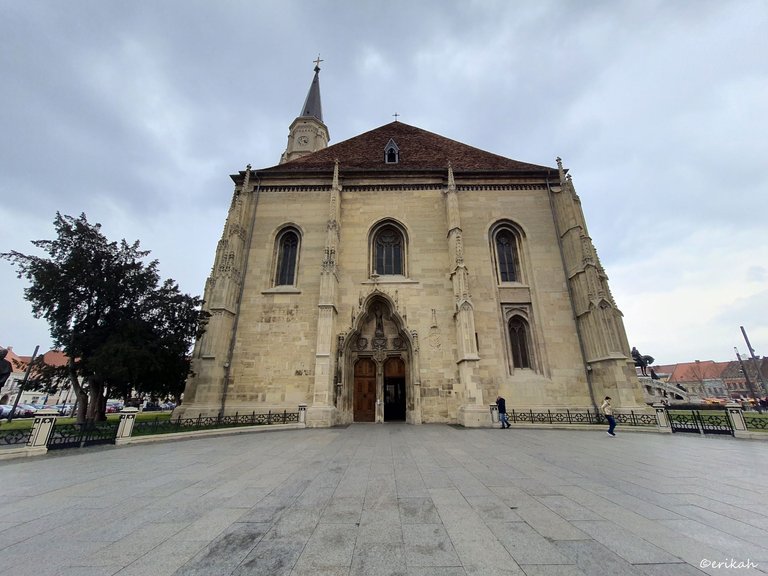
Although neither its size, not it's architecture is not the same, when I look at the details, it still reminds me of the Notre-Dame de Paris.
The St. Michael's Church (Romanian: Biserica Sfântul Mihail, Hungarian: Szent Mihály-templom, German: Michaelskirche) is a Gothic-style Roman Catholic church in Cluj-Napoca. It is the second largest church (after the Biserica Neagră of Brașov) in the geographical region of Transylvania, Romania. The nave is 50 meters long and 24 meters wide, the apse is 20×10 m. The tower with its height of 76 meter (80 meter including the cross) is the highest one in Transylvania.
The construction was begun probably in place of the Saint James Chapel. The financing of the church was partly done by the citizens, partly from the income of indulgences. The first related document, dating back to 1349 and signed by the archbishop of Avignon and fifteen other bishops, grants the indulgence for those contributing to the illumination and furniture of the Saint Michael Church. The construction was completed between 1442 and 1447, the old tower being built between 1511 and 1545. The tower that stands today was erected in 1862. source
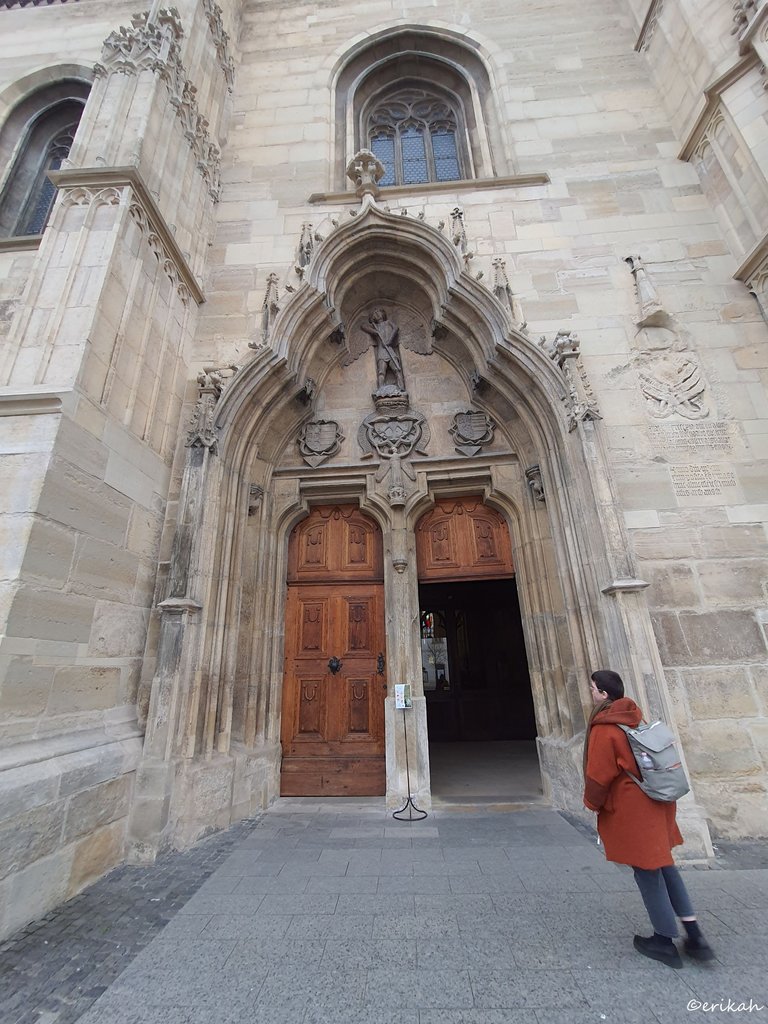
Look at this marvelous entrance, maybe you can see why it reminds me of the Notre-Dame de Paris.
Even though I'm not a catholic, this church is an absolute beauty and has something magical. Always gives me a lot of calmness, so it's a pleasure to visit the interior each time I'm around.

The church is open to the public every day and there's no entrance fee, which, coming from western countries may seem strange, but it is the right thing, trust me. How many times I've been to different churches and had to pay entrance fees. It's not right! There are several money boxes in the church, you can contribute if you like, and many do. But to ask to pay if you want to visit, it is wrong in my eyes.
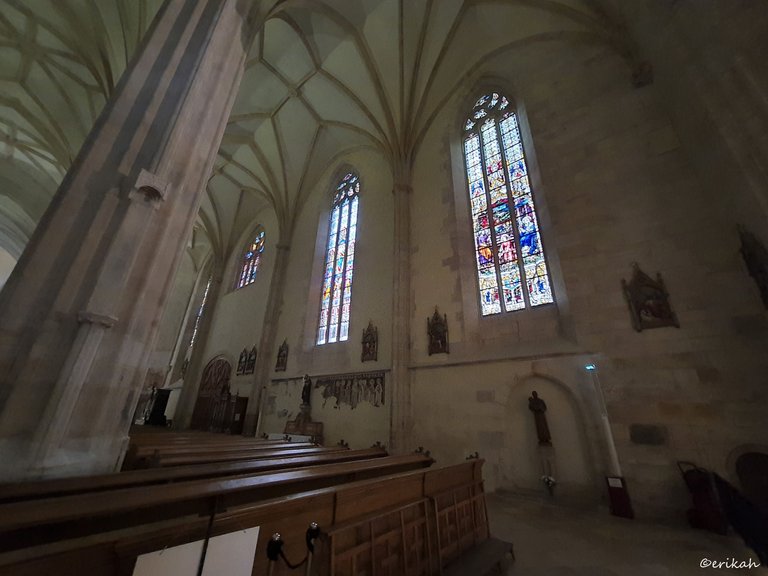
If you like gothic architecture, you'll like the exterior and the interior as well. Both are lovely. As it happens in churches, there was not enough light and my rule is to not use the flash of the camera, so I did what I could.
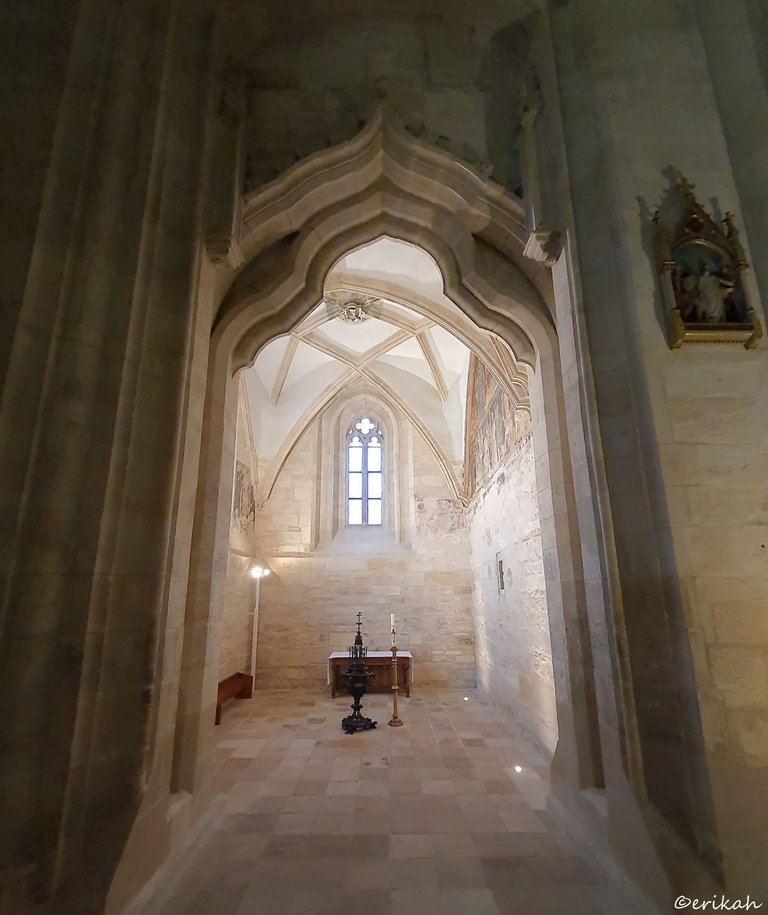
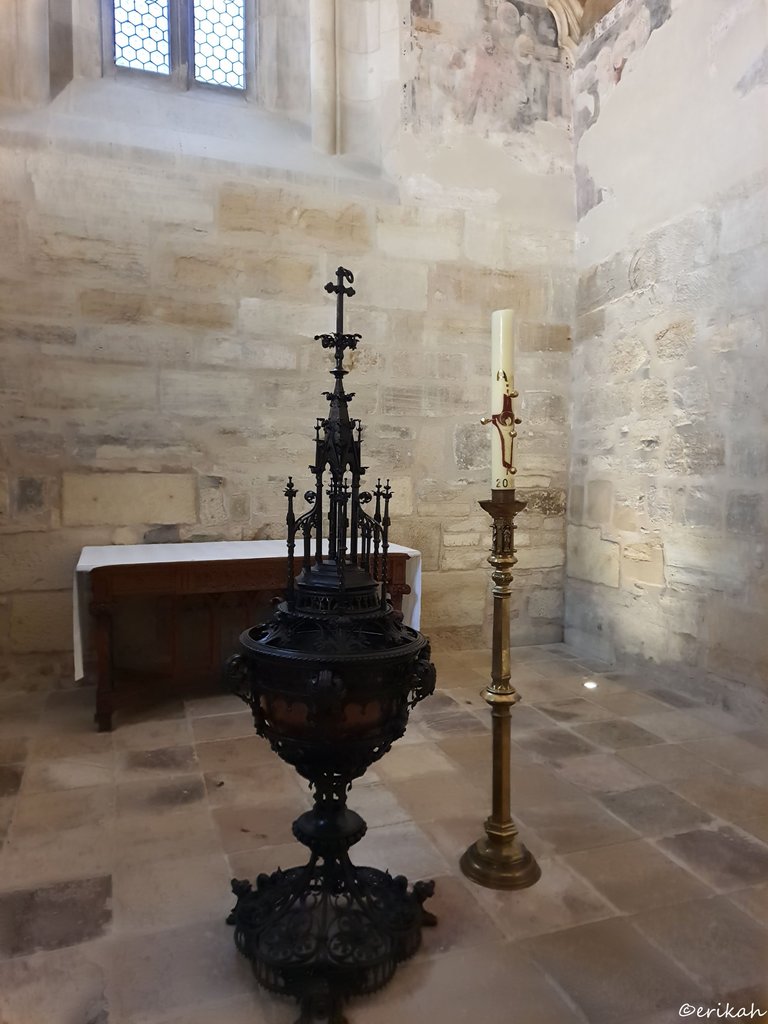
Right to the entrance, there's this chapel (I suppose it's a praying area), where maybe christenings can be held.
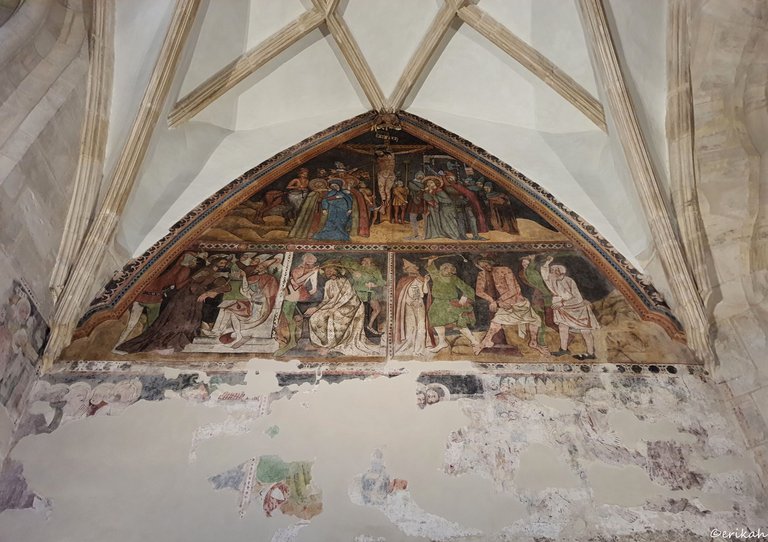
This is where things start to get interesting.
After the middle of the 15th century, the so-called Schleynig (Sleunig) chapel was created at the southern part of the hall. The scenes of the frescoes on the north wall of the chapel depict the sufferings of Christ. In the same place on the west wall, the fresco depicting the Last Judgment, made between 1420 and 1430, is considered an iconographic rarity due to the figure of Christ holding a sword between his teeth.
The medieval frescoes of the Sleunig chapel were discovered by Rómer Flóris in 1864 and revealed in 1866, and the wall paintings in the nave were discovered by László Darkó during the restoration that began in 1956.
source
These churches have a long history, dating back to many centuries, during which a lot of things happened.
The church was used by the Lutherans between 1545 and 1556, by the Reformed between 1556 and 1566, and by the Unitarians from 1566 to 1716, with an interruption of almost two years. Since then, it has been a Roman Catholic church without interruption. source
Each time the church was occupied and used by another religion, there was a chance the old frescos were destroyed, or in the best case, covered, painted on. This is how restoration works sometimes reveal old frescos, paintings.
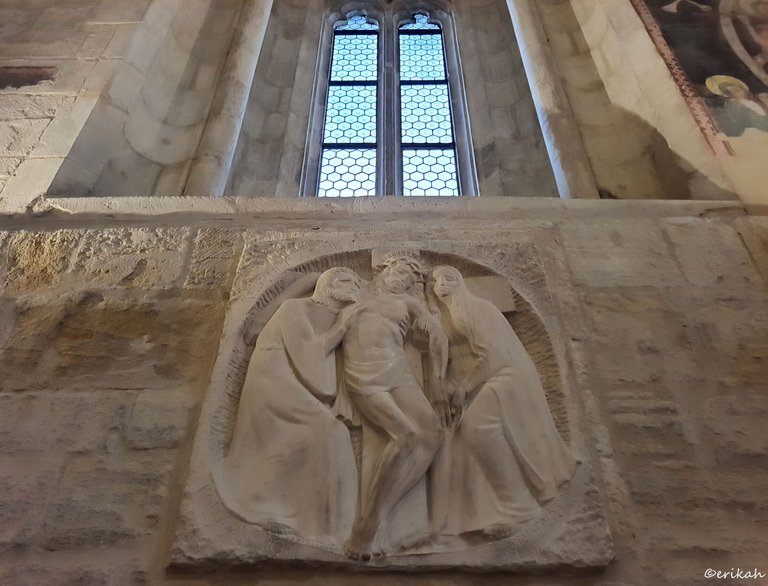
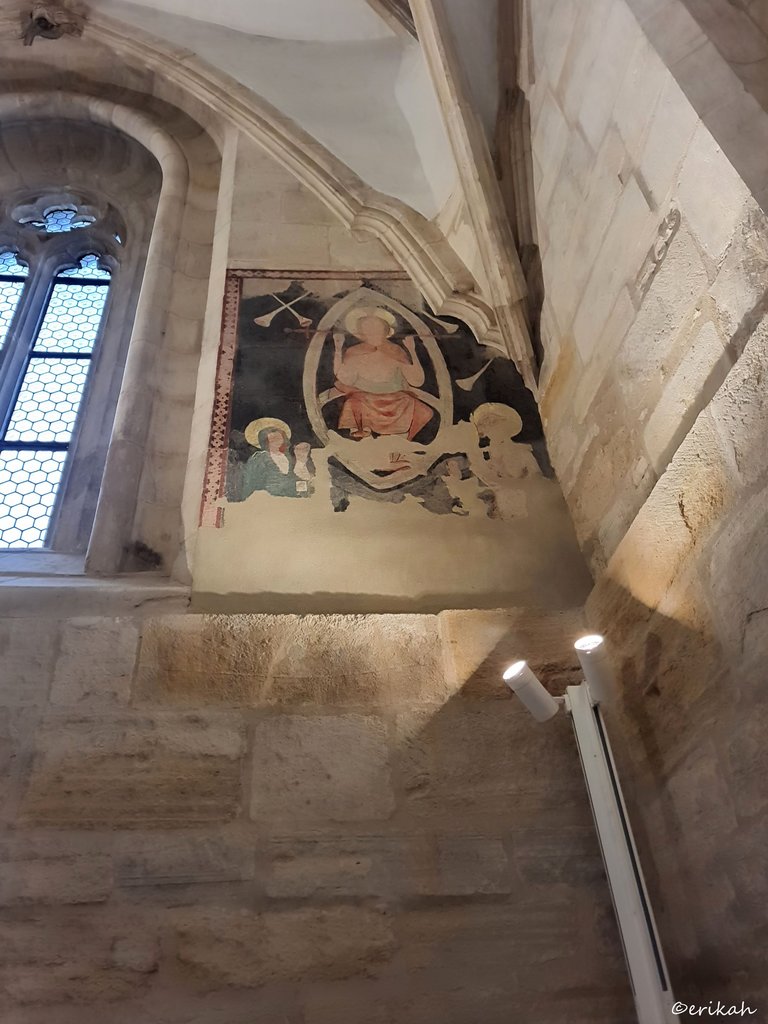
Fragments of frescos are visible on almost each wall. It gives you an idea about how the church had looked like, although there's a chance these frescos are not from the same time period.
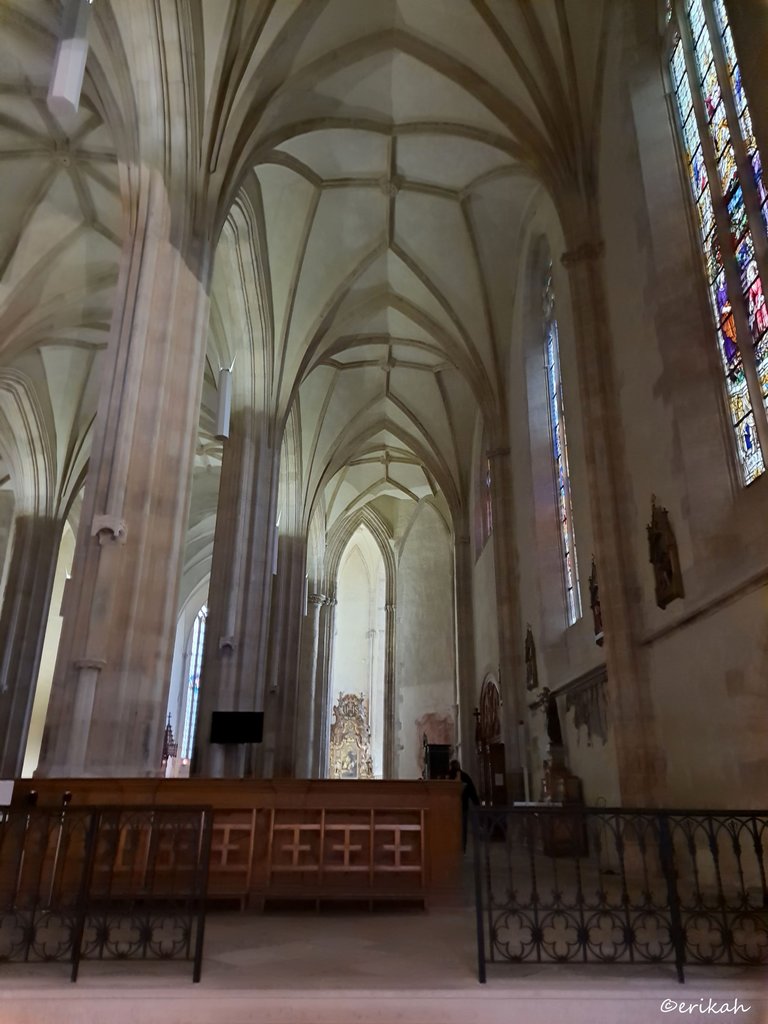
This is the right isle.
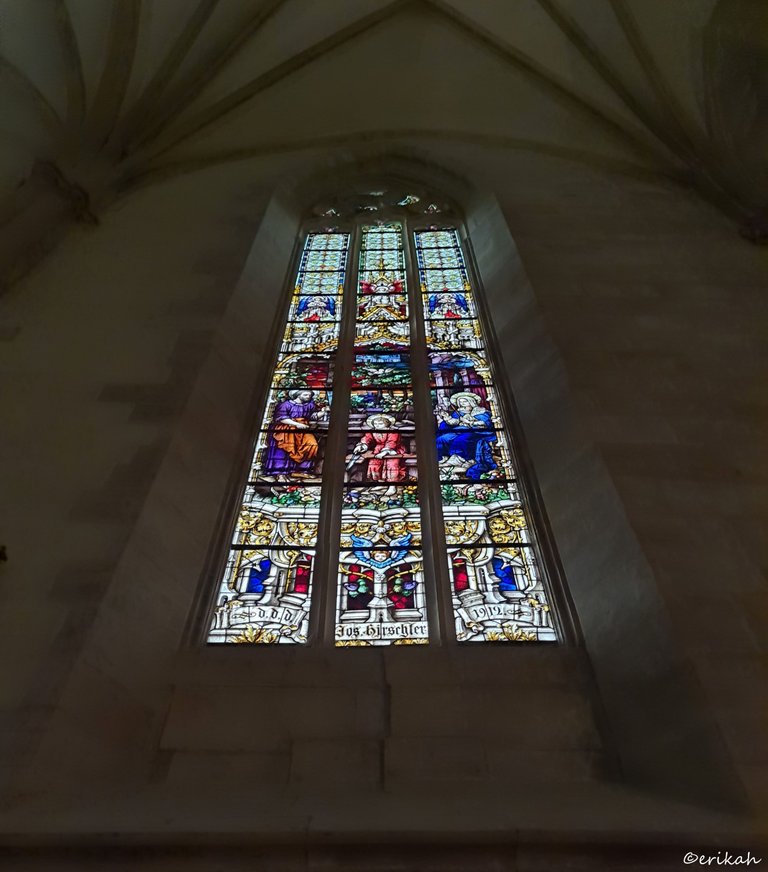
The church can pride itself with some wonderful painted glass windows. Too bad these are so high, you can't take a better photo.
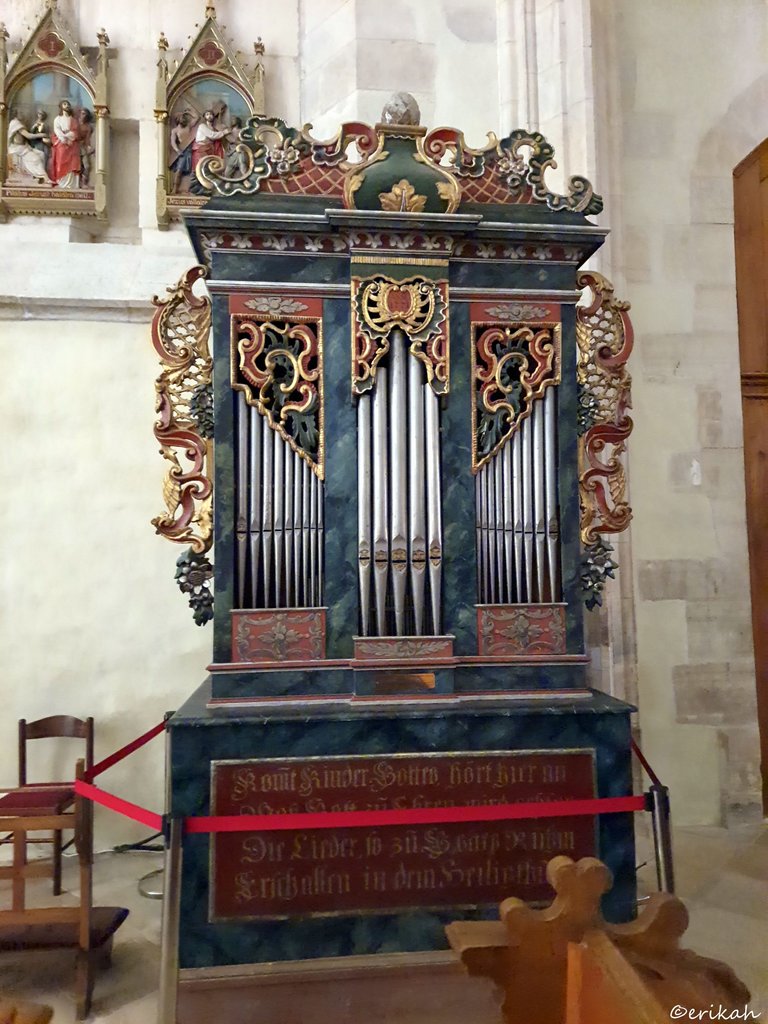
Churches of this size usually have two organs and this is the small organ of the St. Michael's church.
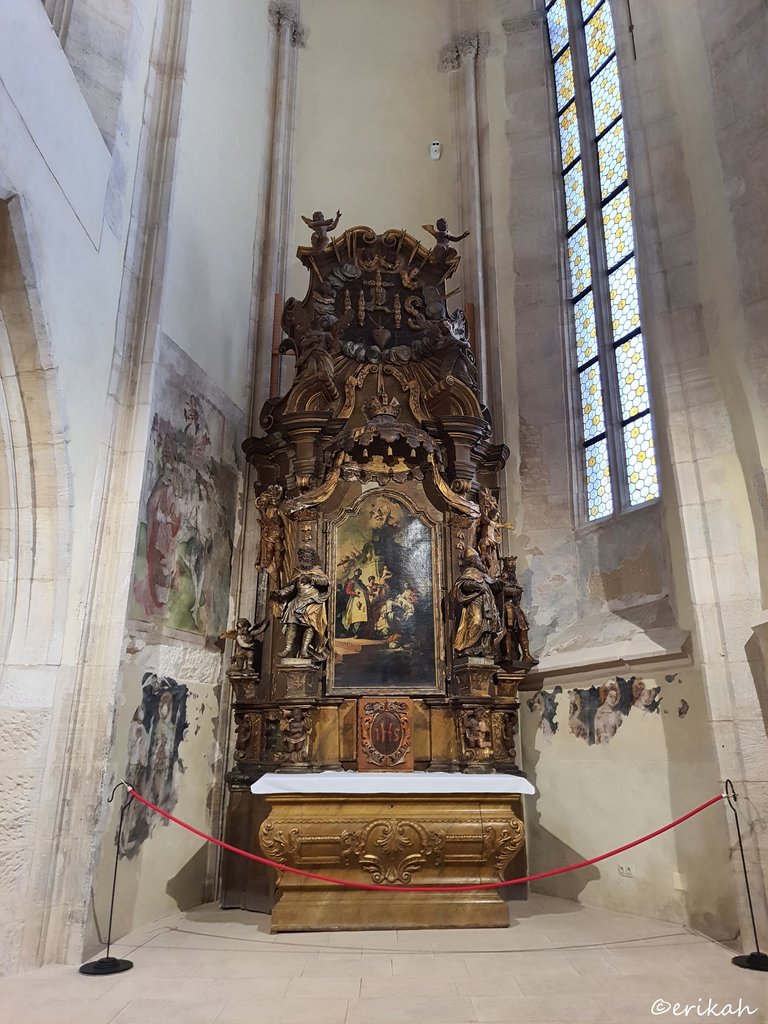
Adoration of the Three Kings altar, framed by old frescos.
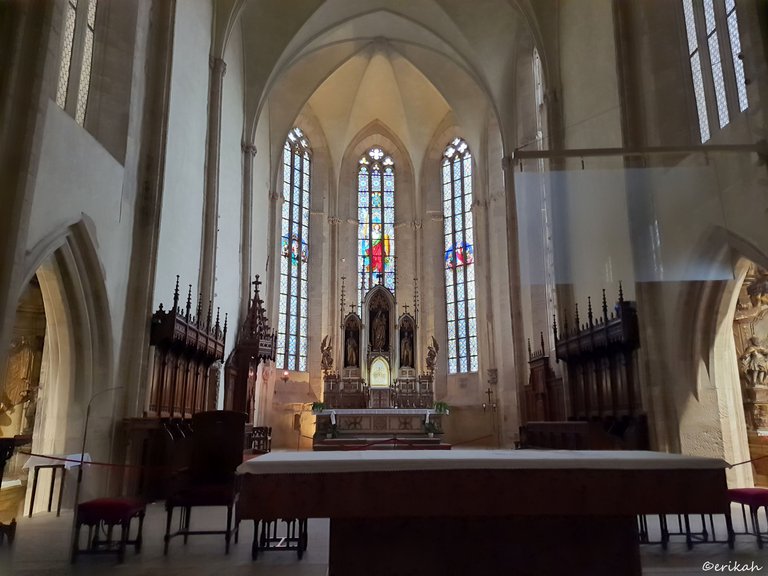
This is the main altar, with the beautiful painted windows in the back. Unfortunately this is how far you can go as a visitor. The carved wooden chairs on both sides of the wall are real masterpieces as well, too bad I could not get a closer photo.
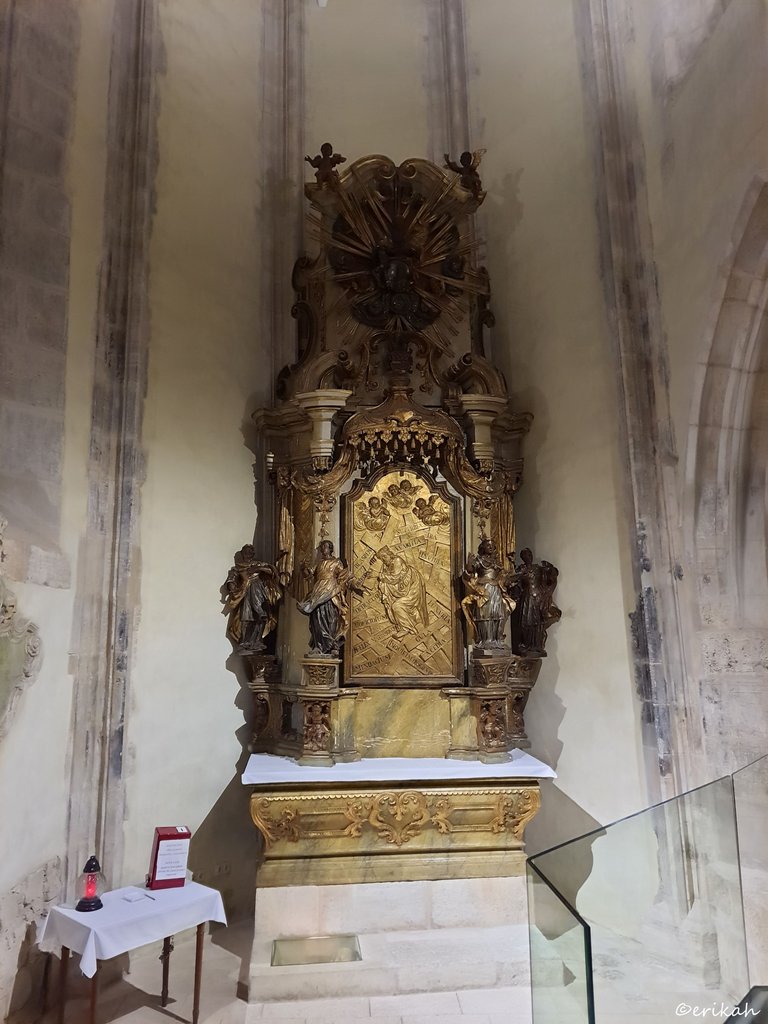
The small alter on the left side.
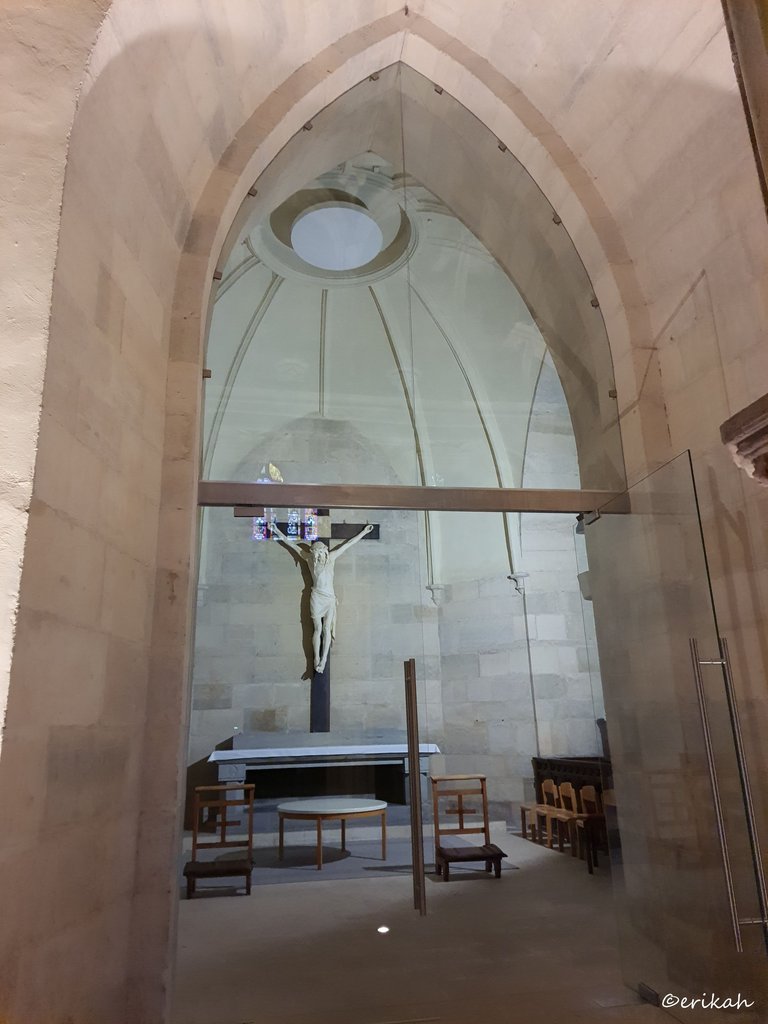
There's a small chapel on the left, where you can pray in peace.
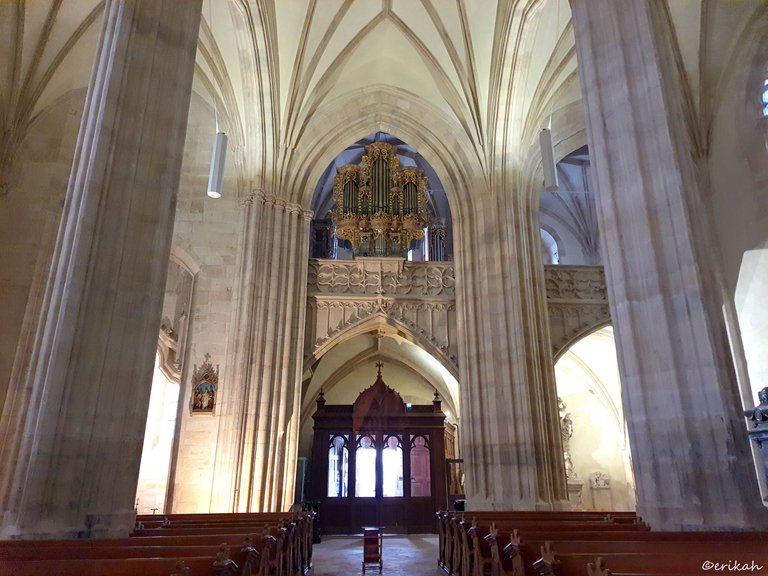
And here's the most interesting spot of each church in my opinion, the main organ. Compared to what I've seen so far, this is quite a small one, but I bet it has a very nice voice.
The organ was built in 1753 by master builder Johannes Hahn(wd) (1712–1783) from Sibiu; decorations by Johannes Nachtigall. It was originally a one-manual, pedal-less, 12-register(wd) instrument, according to Erich Türk(wd), relatively modest in size compared to the size of the church and the city's financial resources. It remained almost unchanged until 1990, when Hermann Binder restored and expanded it, so it became a 35-register, three-manual. During the renovation of the church between 2018 and 2022, 16 new pedal registers were added. source
I hope I can attend an organ concert here one nice day. Fingers crossed.
At the time of my visit, there was music playing, but it wasn't live music. It was a choir singing and I found the music very appropriate. It makes the experience nicer.
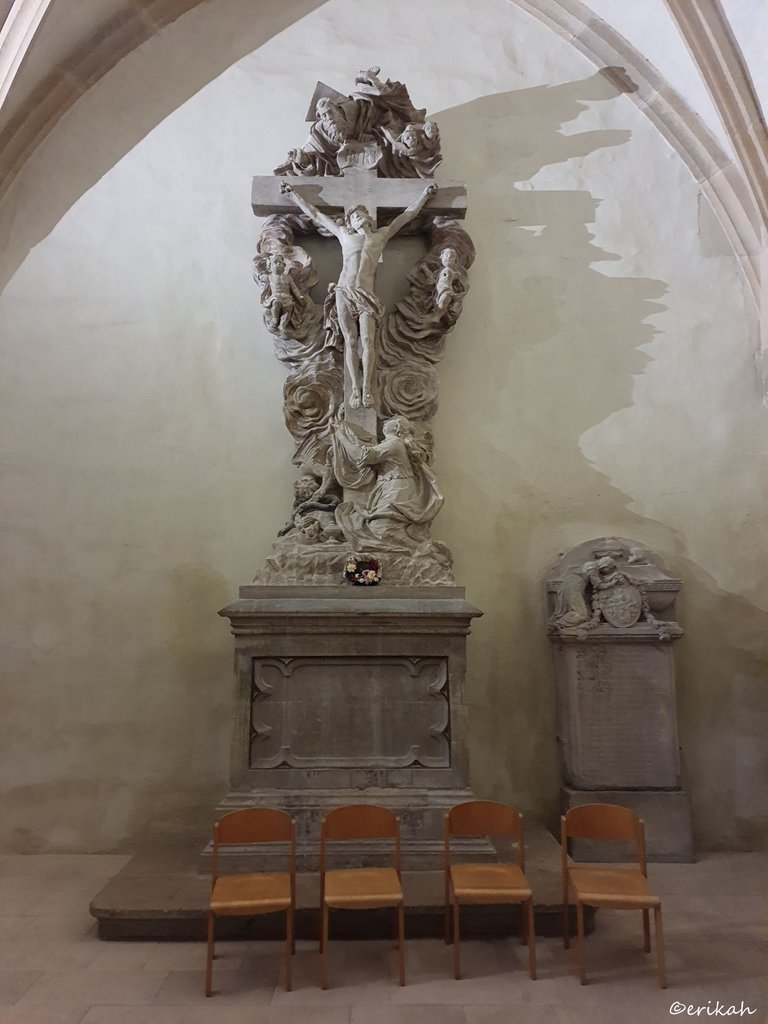
Another praying space on the left side of the entrance. It is common among Catholics to enter the church during the day and say a prayer.
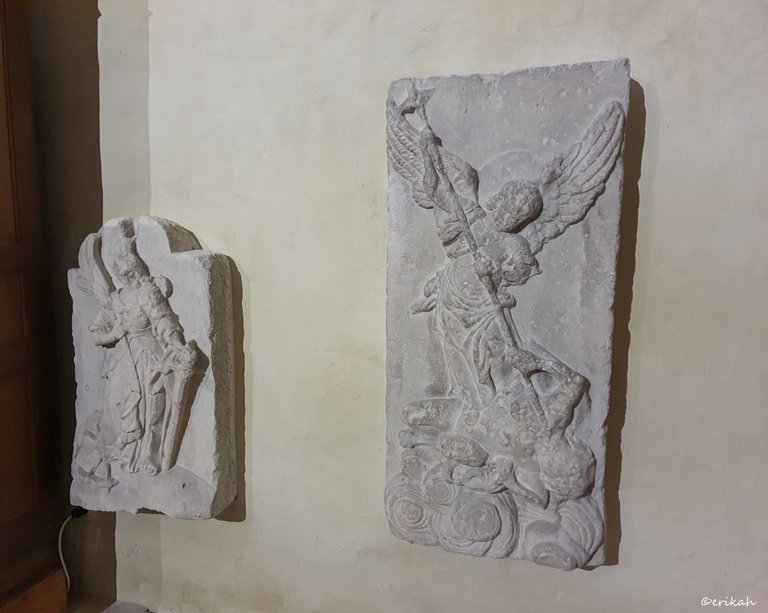
I was looking at these wonderful sculptures and thinking of the artists, who created these beauties back in the day. We don't know their names as the works were commissioned by the church, but I think we can consider these works of art too.
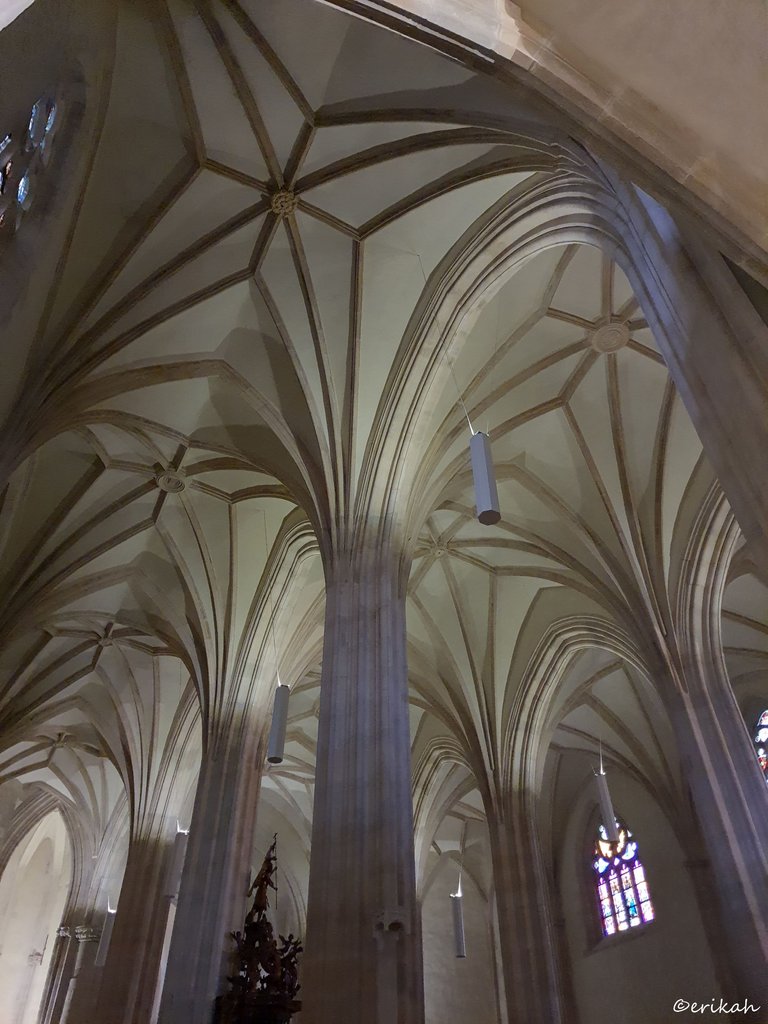
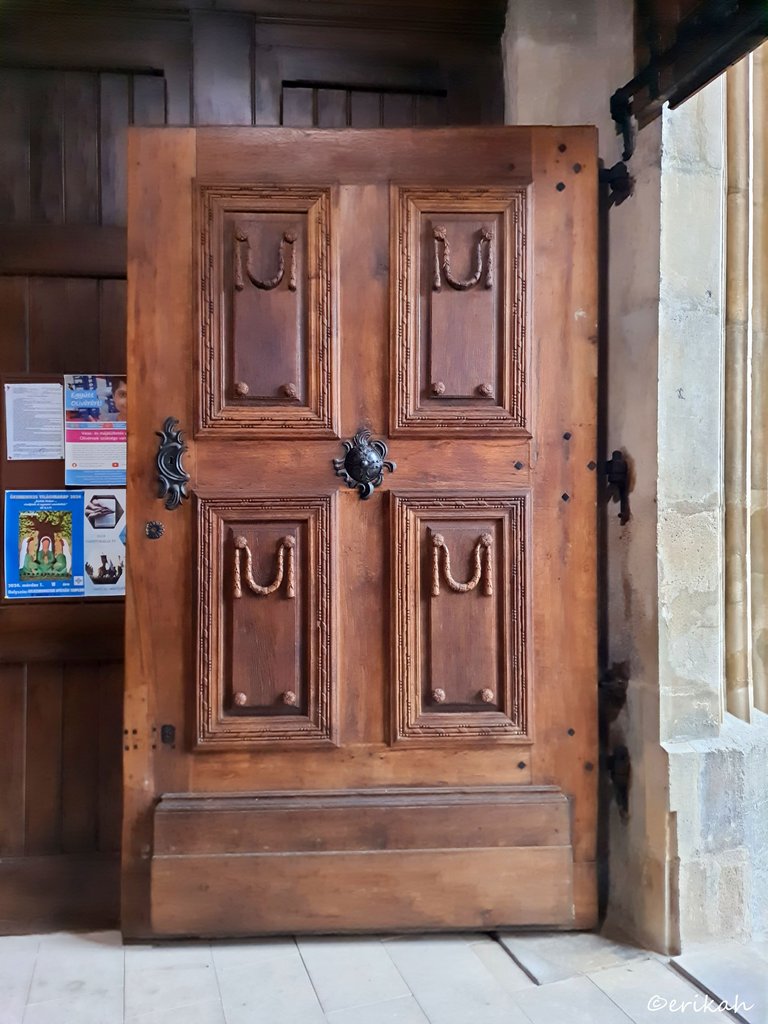
The door is a masterpiece too.
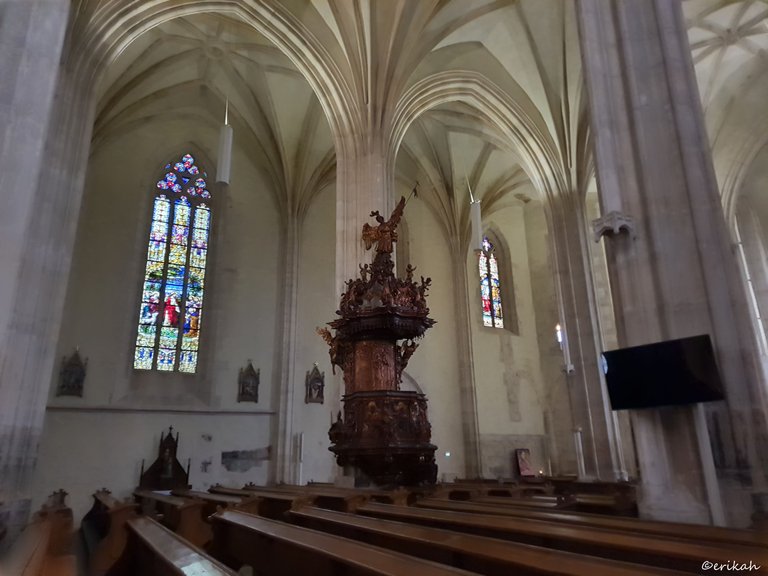
Last, but not least, the pulpit, which is another real masterpiece. Carved wood, decorated with some amazing statues.

Unfortunately, the photos are not good quality.
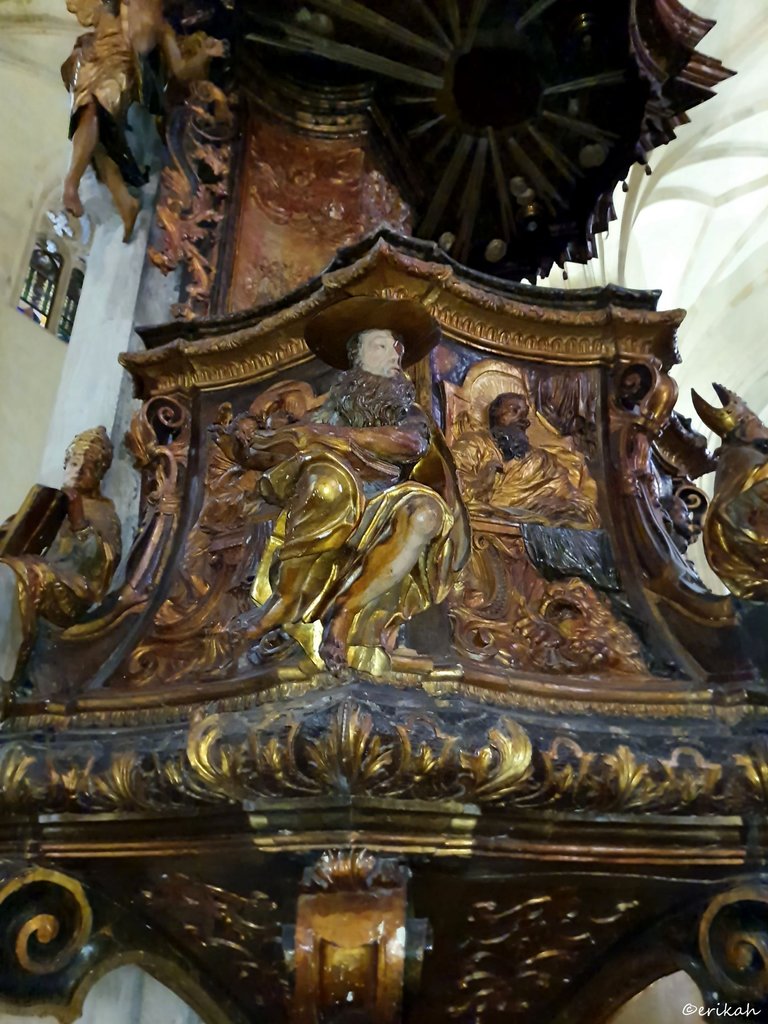
I broke my own rule, used the flash of the camera, but still no luck.
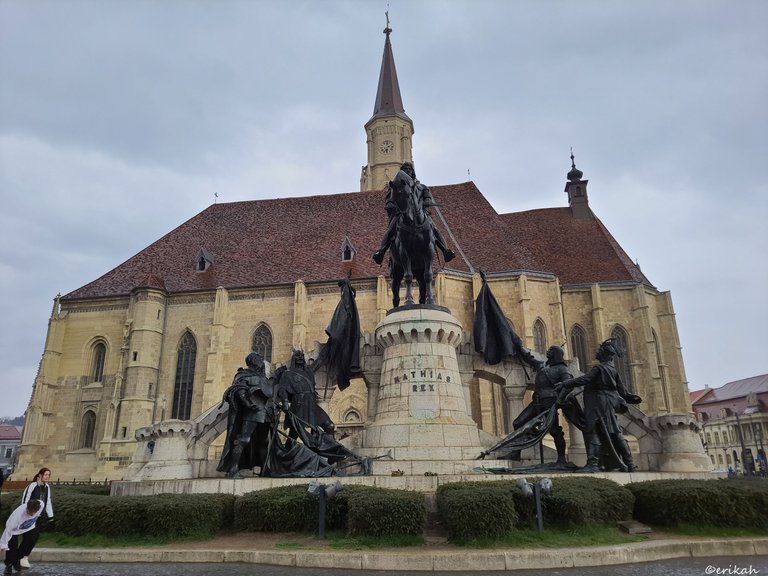
The church from outside with the statue of Mathias Rex, to have an idea about its impressive size. It is definitely a place to visit, if you're there.

If you're a newbie, you may want to check out these guides:
- Communities Explained - Newbie Guide
- Cross Posting And Reposting Explained, Using PeakD
- Hive Is Not For Me
- How To Pump Your Reputation Fast - Newbie Guide
- Tips And Tricks & Useful Hive Tools For Newbies
- More Useful Tools On Hive - Newbie Guide
- Community List And Why It Is Important To Post In The Right Community
- Witnesses And Proposals Explained - Newbie Guide
- To Stake, Or Not To Stake - Newbie Guide
- Tags And Tagging - Newbie Guide
- Newbie Expectations And Reality
- About Dust Vote And Hive Reward Pool, by libertycrypto27


